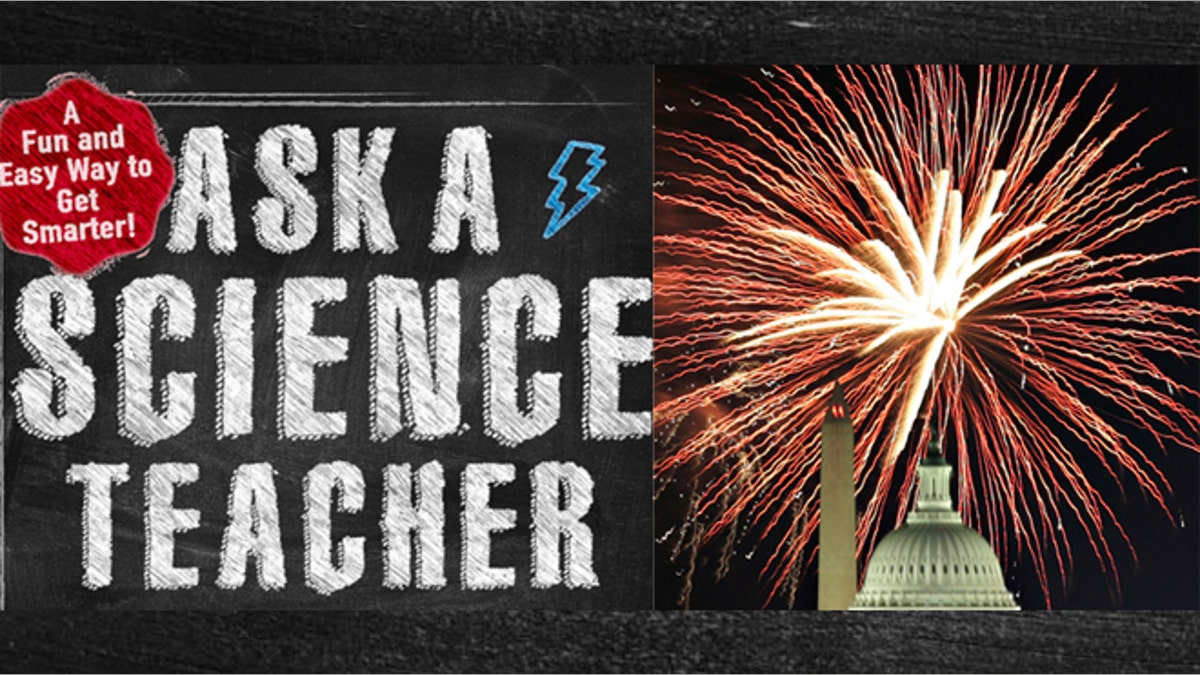
(Larry Scheckel/Reuters)
There is much chemistry and physics in fireworks; the color of fireworks, for one thing, is all in the chemicals. Your basic fireworks have been around for hundreds of years.
The kind we see on the Fourth of July or New Year’s Eve are shot from a mortar-like steel tube. The shell’s fuse burns while it rises to the proper altitude, and a time-delay fuse ignites the bursting charge, which consists of black powder (charcoal, sulfur, and potassium nitrate).
Simple shells are paper tubes or spheres filled with “stars” (wads of clay dough soaked with chemicals) and the combustible black powder. The black powder ignites the stars and throws them outward in every direction in the beautiful starburst pattern that we so often see.
Every element has a distinct signature, or spectrum. That signature is determined by the electron structure surrounding the nucleus of each atom. When any element or compound is burned, atoms are given energy and the result is that electrons move to orbits farther from the nuclei.
When those electrons go back to their ground, home, or steady state, that atom emits a little piece of energy called a photon. Photons are light, and the color of that light is determined by which orbits the electrons return to.
- Animals you didn’t know you could have as pets
- MIT researchers devise world’s toughest tongue twister
- Ask a science teacher: What is a black hole?
- Ask a science teacher: Which came first, the chicken or the egg?
- 9 accidental inventions
- Baby, it’s cold inside: Scientists measure the universe’s coldest stuff
The easiest colors to get are the longer wavelengths, such as red, orange, and yellow. The longest wavelengths of red have the least energy of any of the visible wavelengths, or colors. Burning strontium chloride (SrCl2) yields red, calcium chloride (CaCl2) gives orange, and various sodium salts produce yellow.
Barium chloride (BaCl) gives some pleasing greens, and cupric chloride (CuCl) shines into the blue region. Turquoises and ocean greens are very hard to produce. A deep blue is the most difficult color to obtain. The chemicals necessary for a deep blue are unstable and problematic when placed in fireworks.
Fireworks also contain aluminum, iron, steel, zinc, and magnesium, which create bright, shimmering sparks. The metal flakes heat up until they become incandescent and shine oh-so-brightly in the night sky. Most fireworks are actually formulations of various chemicals.
One of the biggest problems involves safety in shipping and storing. The chemicals cannot be too volatile, or they will never reach their destination. Shelf life is another headache; chemicals can decompose over time. Scientists have spent years trying to get high enough temperatures in the burst. Creating fireworks that produce brighter and deeper colors is both an art and a science. Takeo Shimizu’s work Fireworks from a Physical Standpoint is a good read on fireworks.
From the book, "Ask a Science Teacher: 250 Answers to Questions You’ve Always Had About How Everyday Stuff Really Works"; Copyright © Larry Scheckel, 2013. Available December 17 wherever books are sold.
